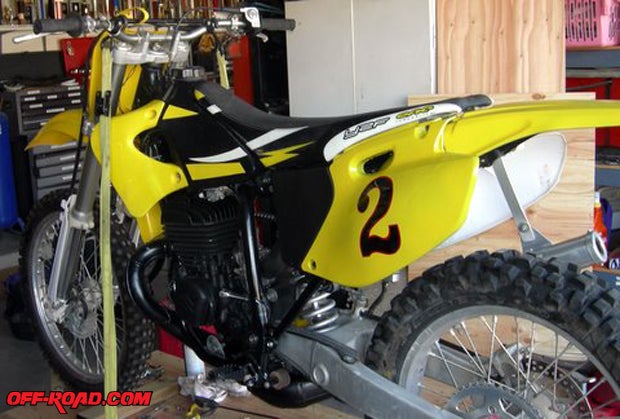
In part seven of our project series, we got the bike started and running with the help of Stephen Gautreau at SG Cycles. Yes, we did get it running with proper jetting, but after Stephen had run the bike only five minutes or so, it stopped running and refused to be rebooted to life.
Project 2-4 Stories:
Part 7
Part 6
Part 5
As it turned out, the problem was mine. You see, I assumed that everything was bolted tightly into place. Little did I realize that the nuts holding the barrel onto the cases were only finger tight, but I also had a slight air leak in the top of the carb where the throttle cable entered. So it was back to my garage where I fixed the problems.
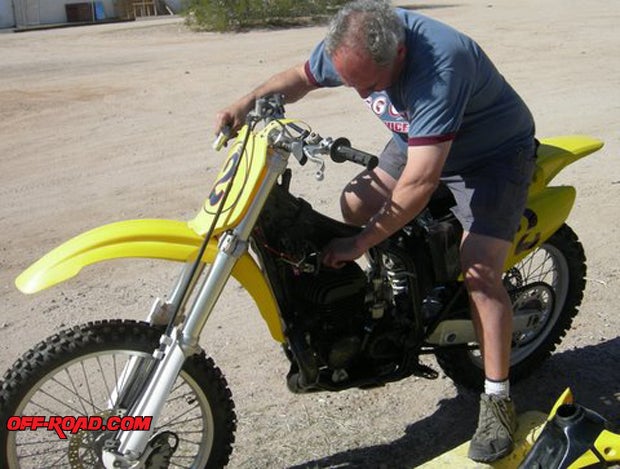
While I was at it, I made damn sure to check every nut and bolt on the engine, double checked the carb and all the mountings, and did a torque check on every possible fastener.
All the wiring connections were also checked, and any loose wiring was zip-tied neatly into place. The last check was wheel alignment and chain tension. Oh yes, the brakes were also given a test before the bike was ridden again.
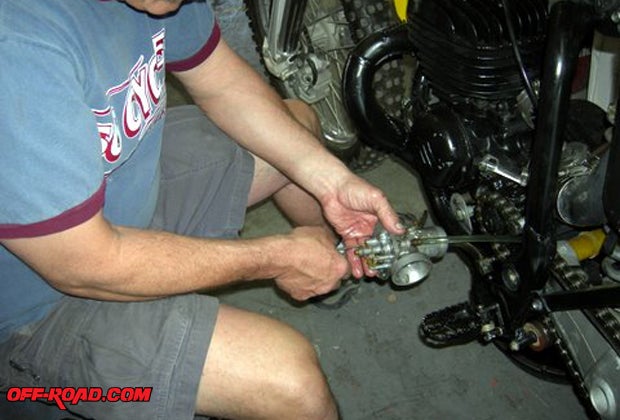
A gallon of fresh premix was poured into the tank and a brand new spark plug was installed. After all this, I was rewarded with the bike barking to life on the second kick.
After a decent garage warm-up, Project 2-4 was rolled into the street and I attempted to sling a leg over the bike. Something was desperately wrong, as the bike set way too high in the air. I realized at that point that taking almost 30 pounds off the bike dramatically changed the way the rear suspension was going to work.
Back to the garage, where I backed way off of the preload spring on the shock to where I had about 100 mm of SAG after the adjustment. This took almost 3/4 of an inch of thread on the shock to get to this amount of preload. I was absolutely amazed at the difference in the saddle height once I got the preload set somewhere in the ballpark. But then again, I had no way of knowing what the weight of the previous YZ 4206F rider was. For all I knew, he could've been a 260-pound rider, or even more. Once again, I found myself guilty of assuming things.
While I was at it, I raised the forks up in the triple clamps to the maximum, and in effect, reduced the height of the front end as well as the rear.
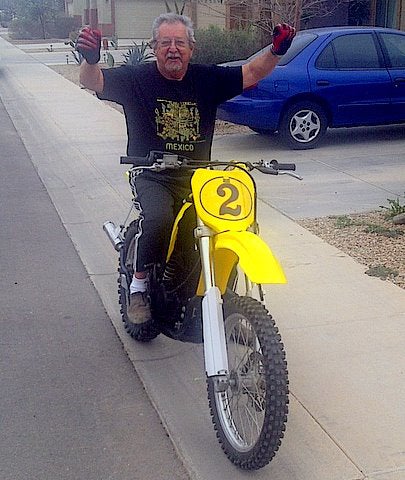
Now was the acid test. I was able to sling a leg over the saddle without too much trouble and the bike settled down nicely under my 200 pounds of body weight. I was actually able to touch the ground with my toes on both sides, which is something that's pretty important to a short rider like me.
The bike was re-fired and I headed out into the street, breaking several laws in the process, including not wearing a helmet or any protective gear whatsoever (don’t do this at home, kids).
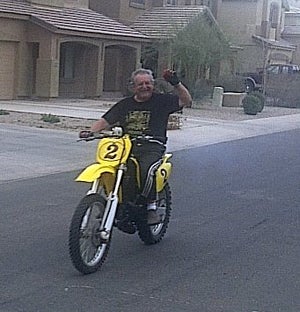
Surprise, surprise, surprise! After a brief warm-up, the bike ran crisply through the gears and actually felt good. I didn't want to ride the bike hard on the community streets, and the fact that I didn't have any gear sort of emphasized that, so I figured I have to plan a day in the dirt to see how the bike really worked in the real world.
Stay tuned for the final part in our project series and we’ll see just how the bike worked.
Part 7
Part 6
Part 5


 Your Privacy Choices
Your Privacy Choices